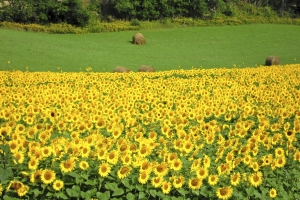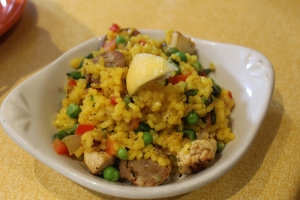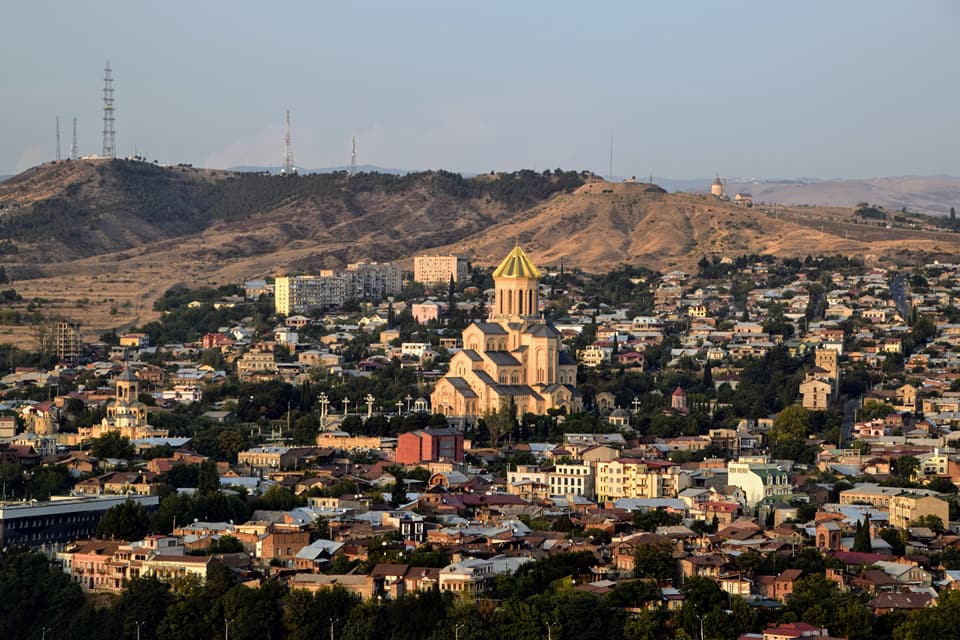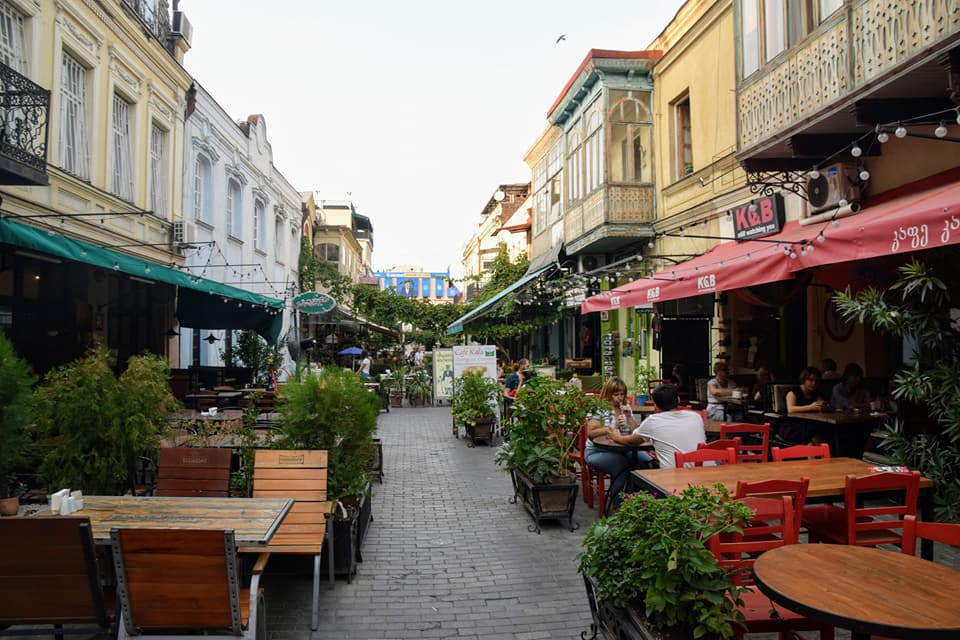Guest Post by Kelly Dunning
Once upon a time, about 8,000 years ago, folks in the South Caucasus attempted to store wild grape juice for the winter by burying it in a clay jar in a shallow pit. When they dug it up the next spring, it wasn’t grape juice anymore. It was something far better — they had discovered wine!
Wine has been important to Georgian culture ever since. It is enjoyed at traditional feasts and festivals and is mentioned in myth and literature all throughout the country’s history. Standing tall above the capital of Tbilisi is the Mother of Georgia sculpture — she holds a sword to ward off her enemies and a bowl of wine to welcome her friends.
The Origins of Wine in Georgia
A recent discovery in Georgia in 2017 gave us even more scientific evidence that the tradition of winemaking in Georgia is the oldest on earth. Patrick McGovern, an anthropologist at the University of Pennsylvania, analyzed pottery from sites in Georgia.
He discovered that the pottery held traces of tartaric acid, which is a telltale sign that it once contained grapes. It also contained succinic, citric and malic acids, a combination that is only found in grape wine. Also, one of the ancient jars has a design on it depicting people under a grapevine, dancing — clearly a celebration of wine. The jars dated back to 6,000 BC. (Of course, this doesn’t necessarily mean that wine wasn’t invented even earlier than this. Prehistoric people could have fermented grapes in animal hides, which would have decayed long before we could discover and study them. So, there is a possibility that the discovery of wine could be older than we know.)
Wines You Must Try in Georgia
Which Georgian wines should you sample on your visit?
Georgia claims to have more varieties of wine grapes than anywhere in the world, meaning there are hundreds to choose from. Plus, the fact that they are made in earthenware pots adds a unique flavor to the wine and makes it taste different than anywhere else in the world.
While you are exploring Georgia, which wines should you seek out to try? Here are a few of the best varieties:
- Saveravi: A dry red wine with flavors of plum, wild berries and prunes. Wonderful with grilled meat or strong cheeses.
- Rkatsiteli: A white wine with fruit flavors of melon and peach, with a ginger aroma. Grown in the eastern region of Kakheti.
- Mukuzani: Deep, dark red wine with dark chocolate, spices, black cherry and vanilla flavors.
- Kindzmarauli: This red semi-sweet wine is one of the most famous in the Kakheti region and it has a mild, velvety feel.
- Usakhelauri: Made with grapes that are native to western Georgia that ripen late and are known for their peppery flavour.
- Tsinandali: This type of white wine has been produced in Georgia since 1886. It has a light color and a fine, fruity bouquet.
Why is Georgian Wine Not More Well Known?
Since Georgia’s wine tradition dates back so far, it’s surprising that Georgian wines are not more well known. The reason actually has to do with the changes made to wine production during Soviet times.
Georgian wine producers were forced into making wine that focused on quantity, not quality. At the time, Georgian wines were very popular and were a favorite for Soviets. The wines became mass produced and they were made sweeter to appeal to the Russian palette.
The traditional way of making wine, by burying it in the earth in a clay vessel called a qvevri, was seen by the Russians as too nationalistic. The small batches of wine that were made by local families were perceived as private enterprise. They passed a law to abolish all qvevri production in Georgia. It is only because Georgian families persisted secretly making wine the old way that this tradition has lived on.
Under Soviet rule, the grape growers in Georgia had to deliver their harvest to a “primary winery” where they were processed in bulk. All Georgian wine was mixed together and bottled under one brand, but once the USSR collapsed in 1991 these enormous wineries had no brand identity and no sales. Many of the oldest wine producing regions in Georgia were switched to growing cheap sustenance crops, just to feed hungry people and animals.
There was also a time in the 1980s when Mikhail Gorbachev, in an effort to curb alcoholism, dictated less wine production in favor of growing melons and other produce. The book Wine, by Andre Domine, details how 40,000 hectares of vineyard were turned into melon producing land during this timeframe. This measure once again crippled Georgia’s wine exports.
Since Georgia emerged from the Soviet shadow and gained independence in 1991, traditional Georgian wine is experiencing a renaissance. According to figures from the National Wine Agency, worldwide sales of Georgian wine have increased tenfold since the first years of independence in the 1990s.
The banning of the export of Georgian wine to Russia in 2006, which could have been a devastating blow, was actually a blessing in disguise. Georgian wine survived and reinvented itself, building up exports all over the world. There’s no better time to appreciate the 8,000 years of tradition and the unique flavors of these wonderful wines.
 Copyright secured by Digiprove © 2018 Kurt Jacobson
Copyright secured by Digiprove © 2018 Kurt Jacobson











Thanks for the terrific post